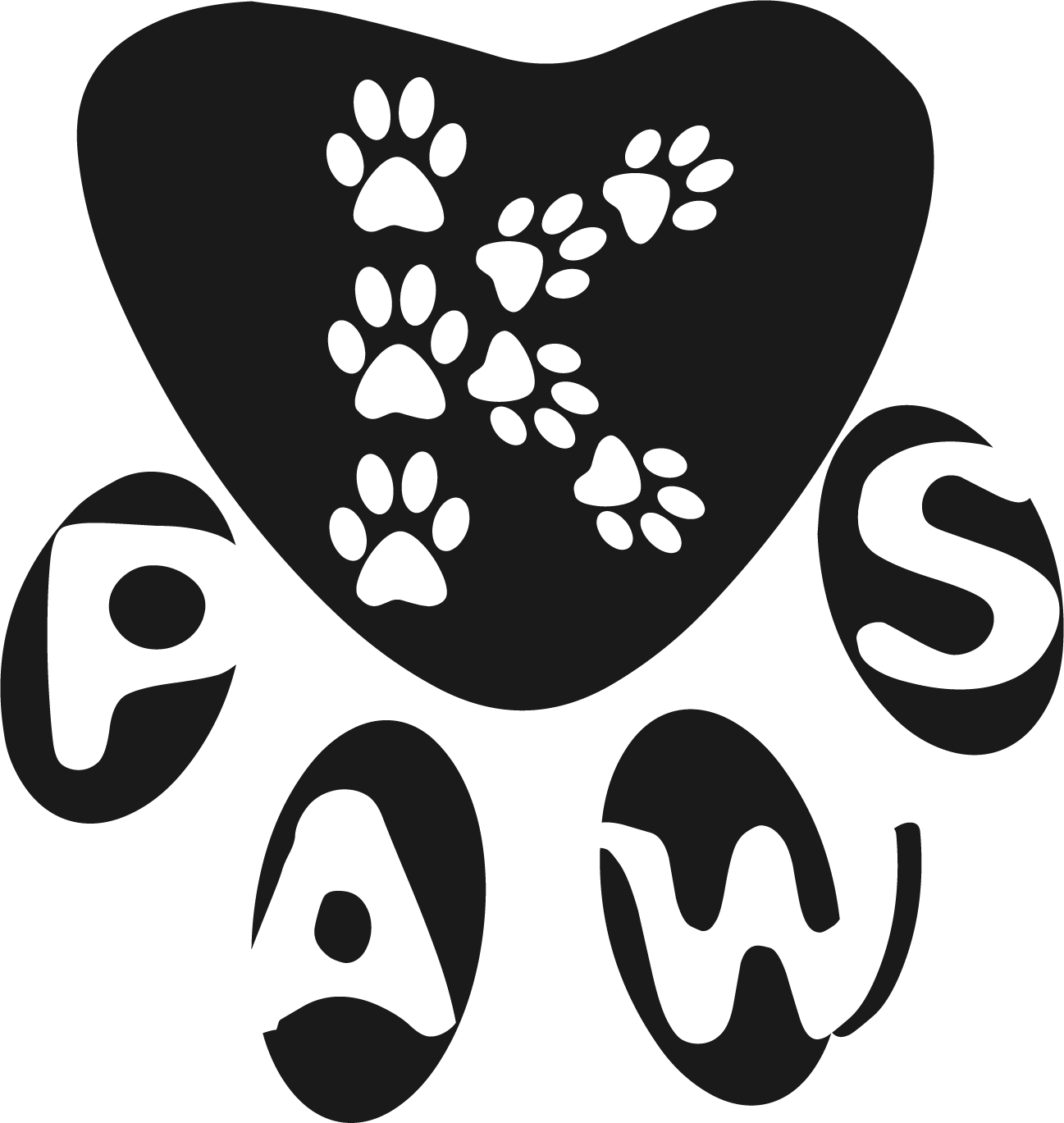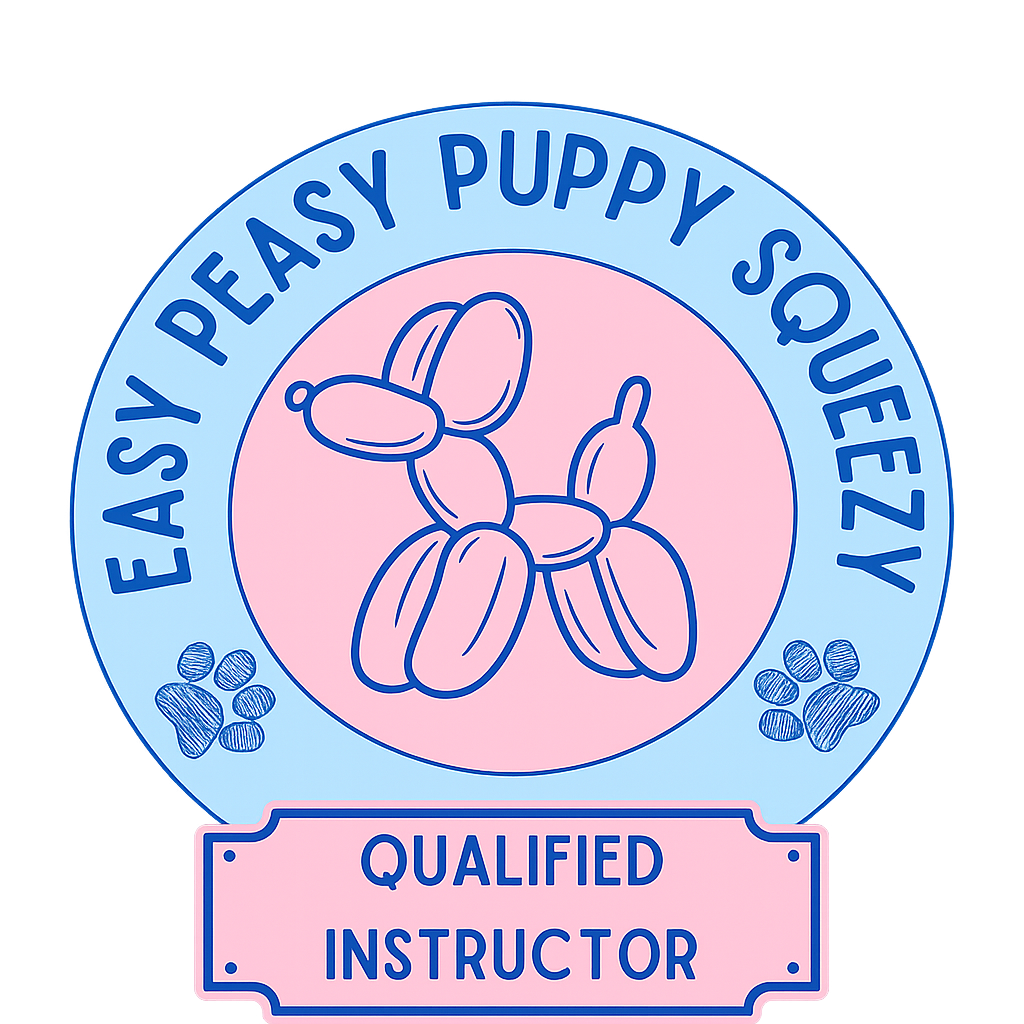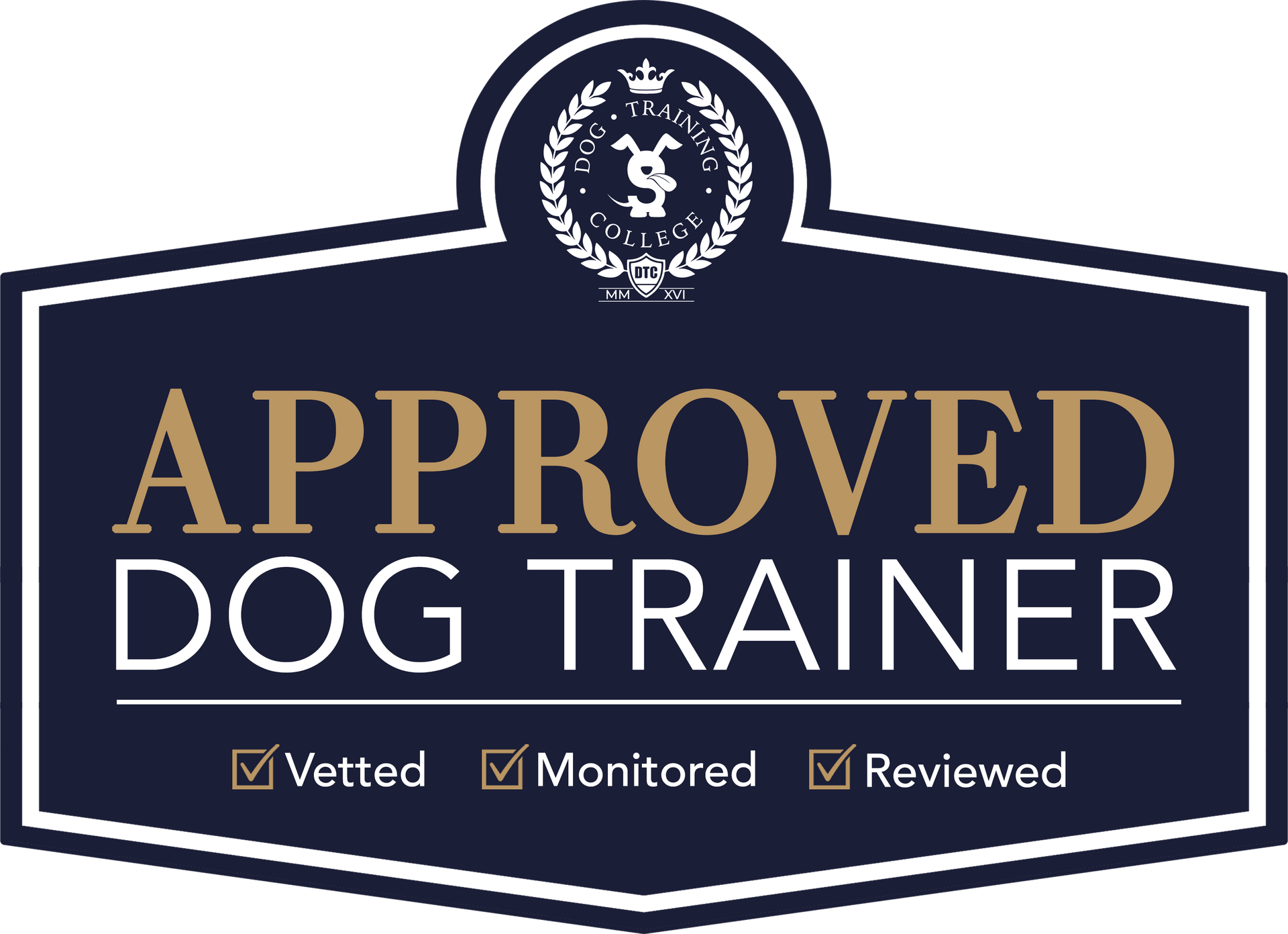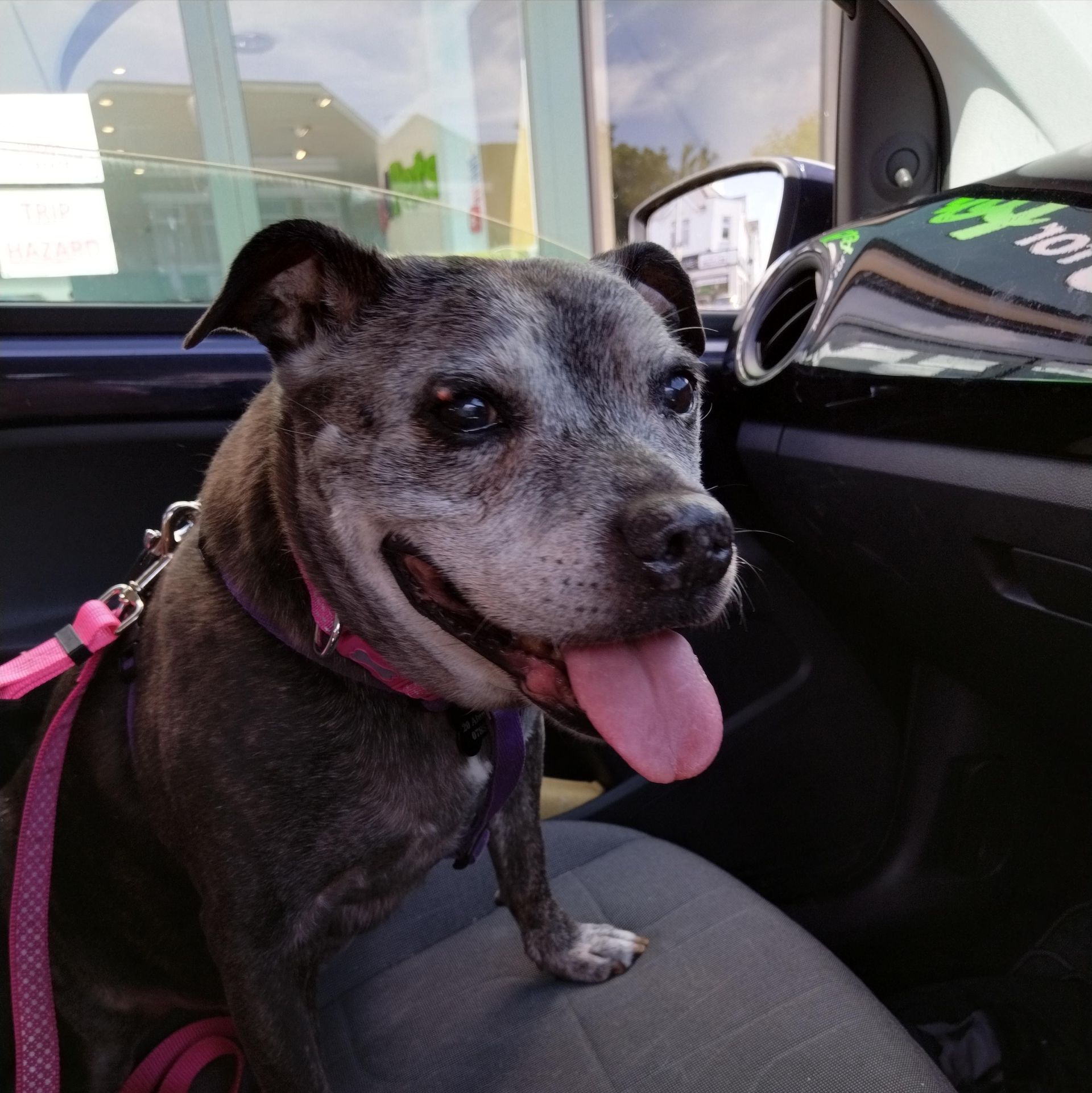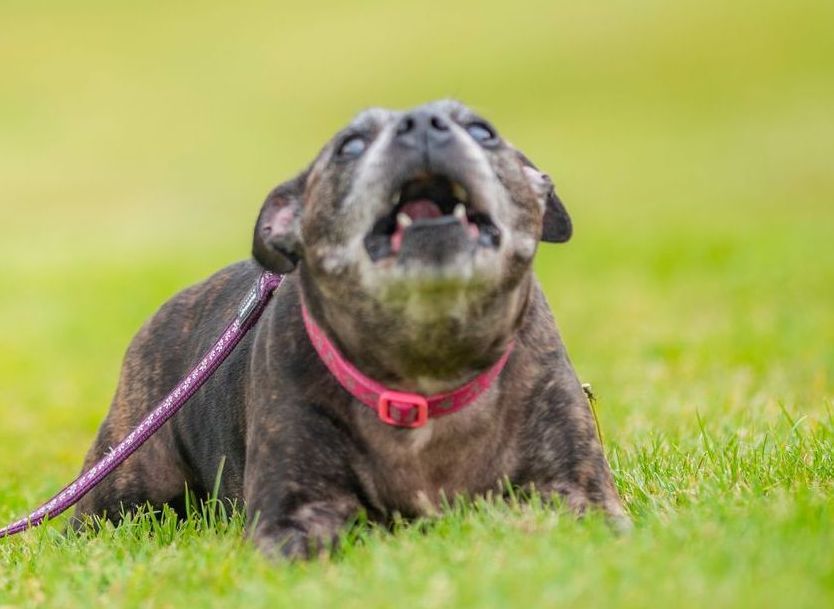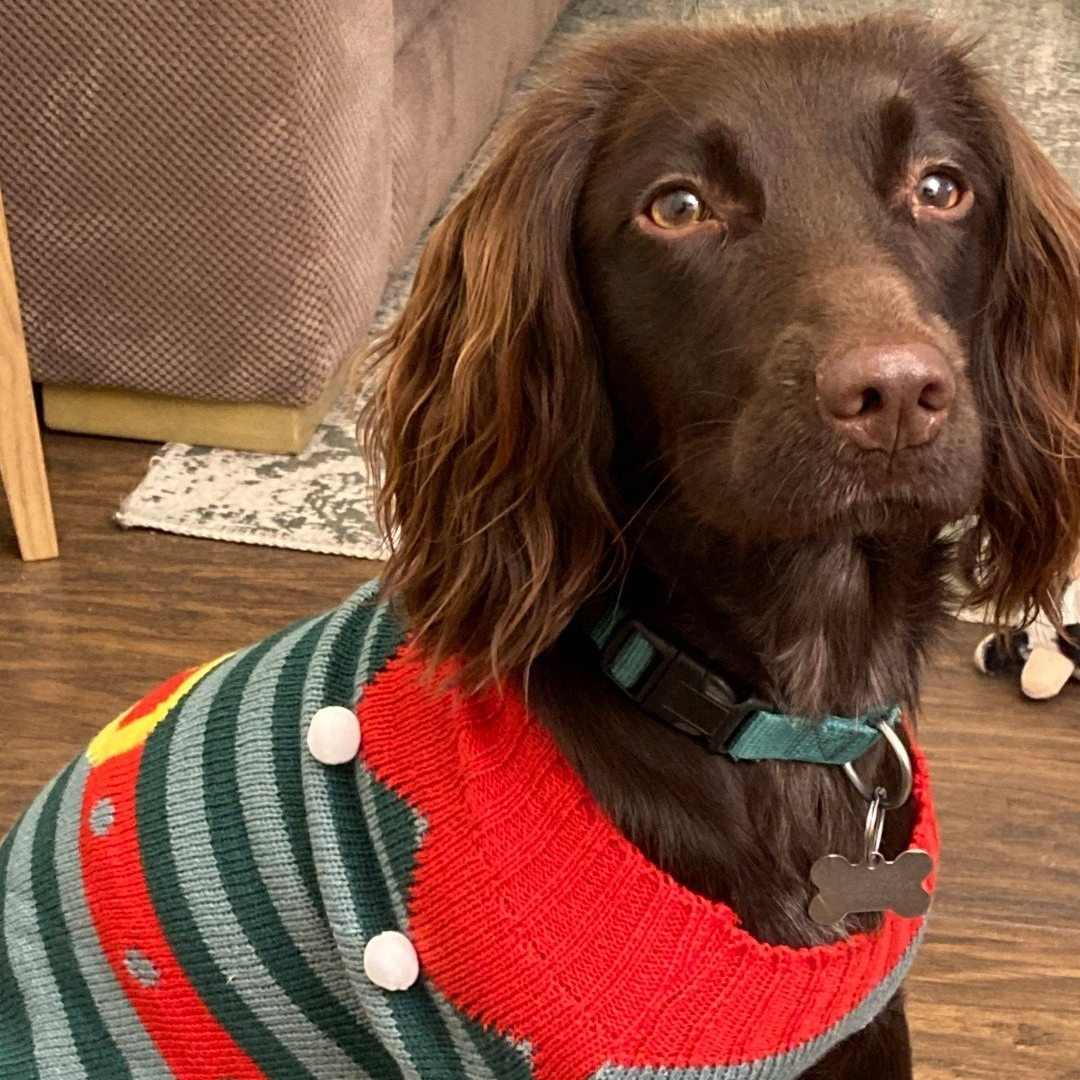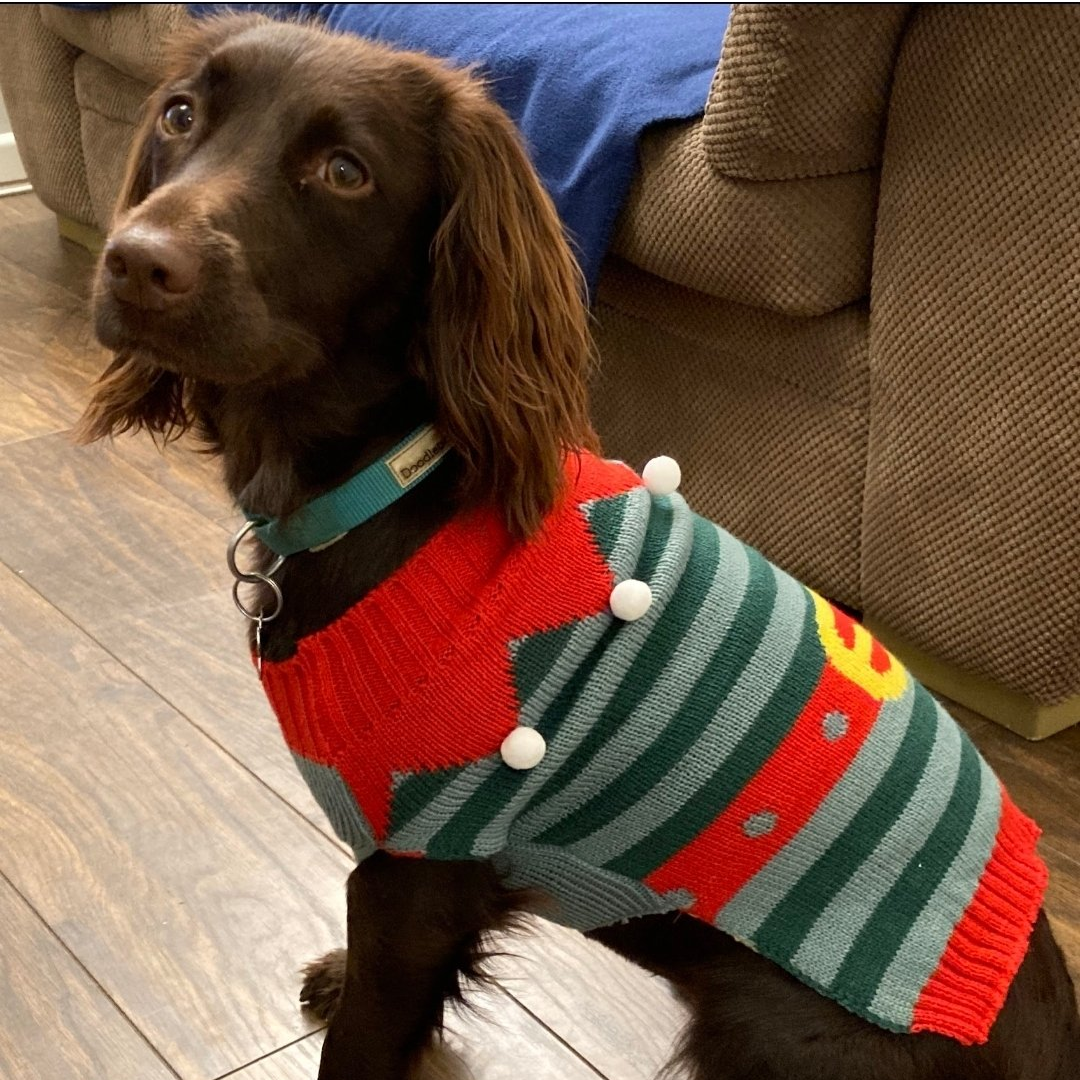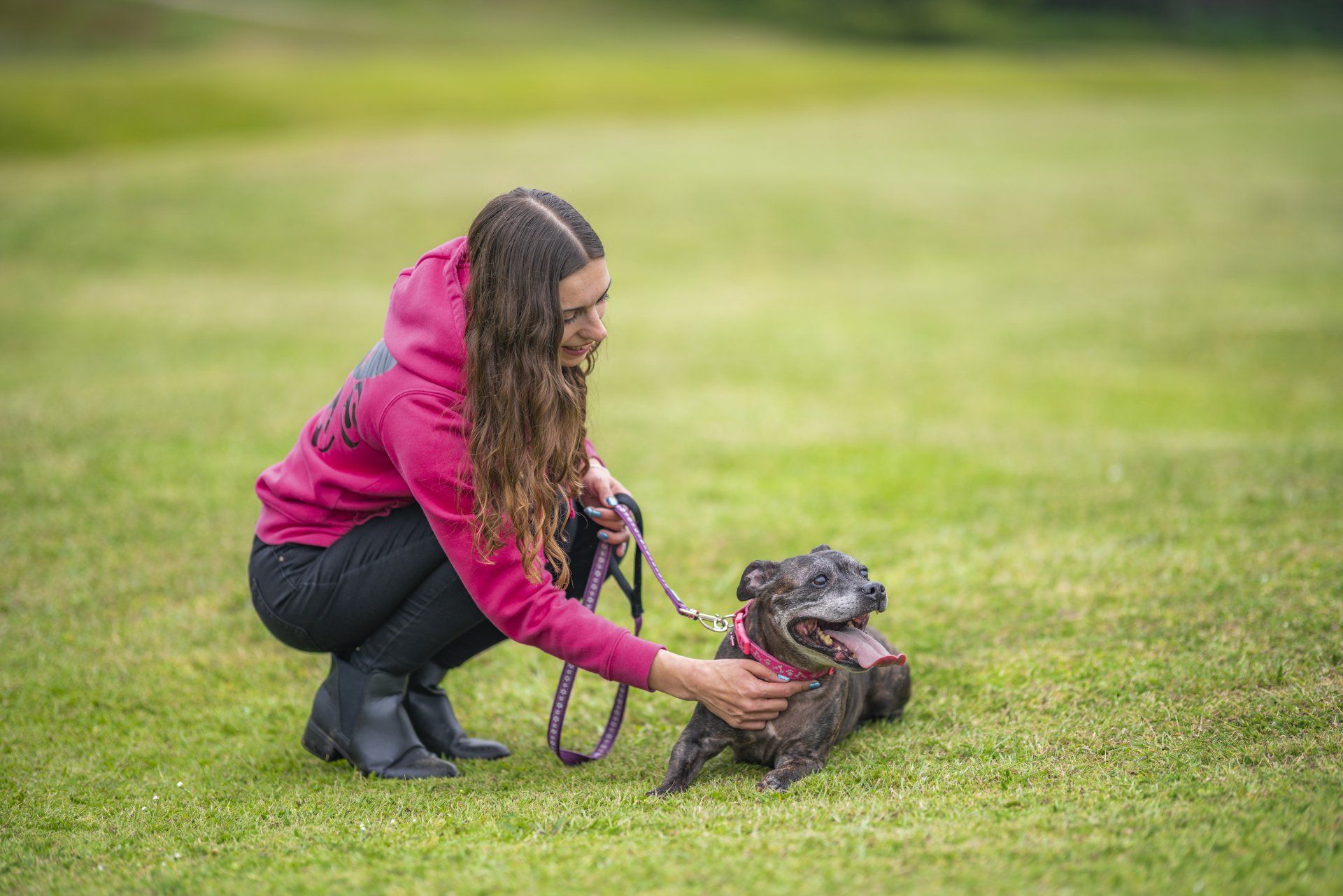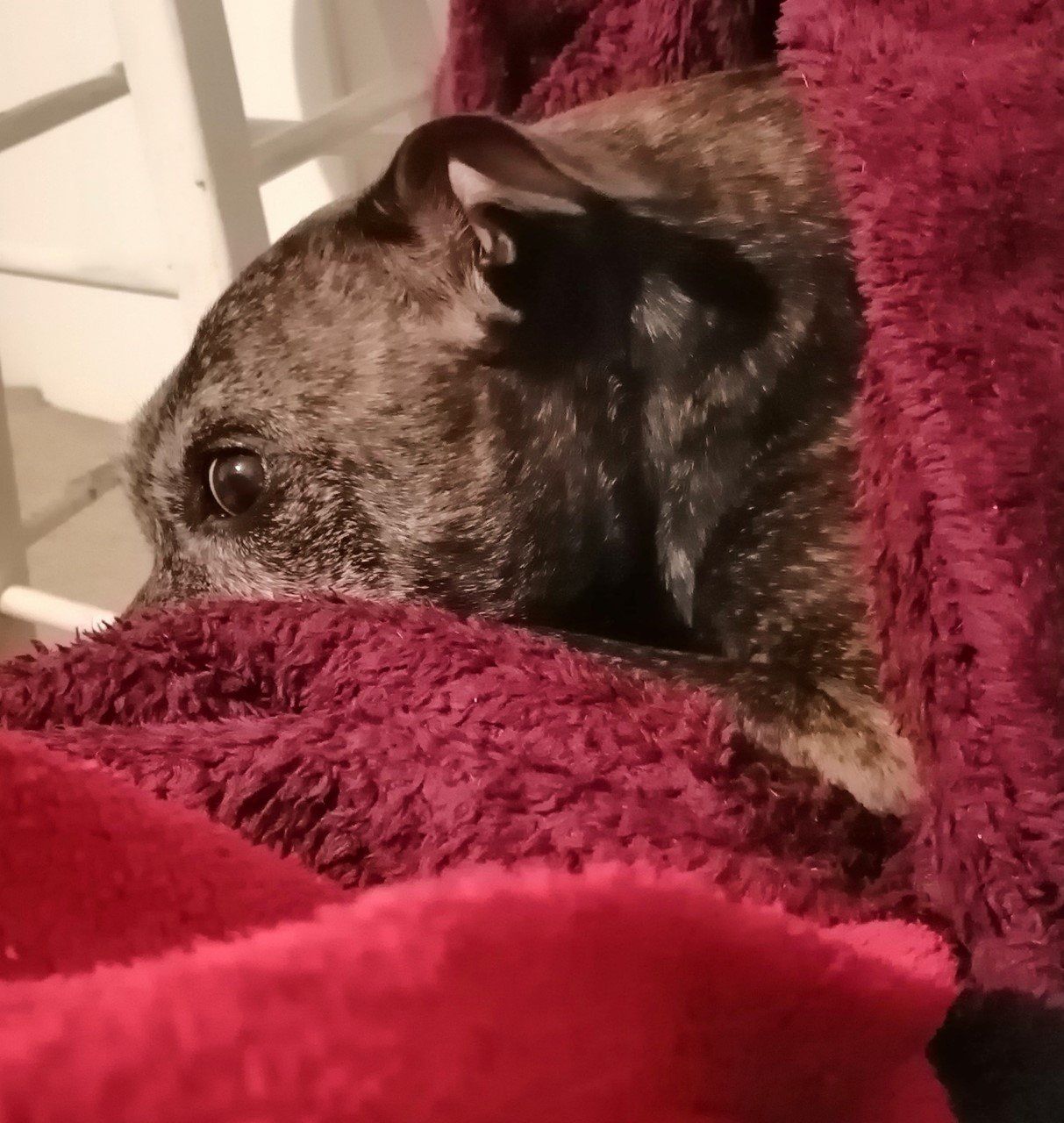How do I stop my Puppy from biting?
Top tips to help with Puppy biting
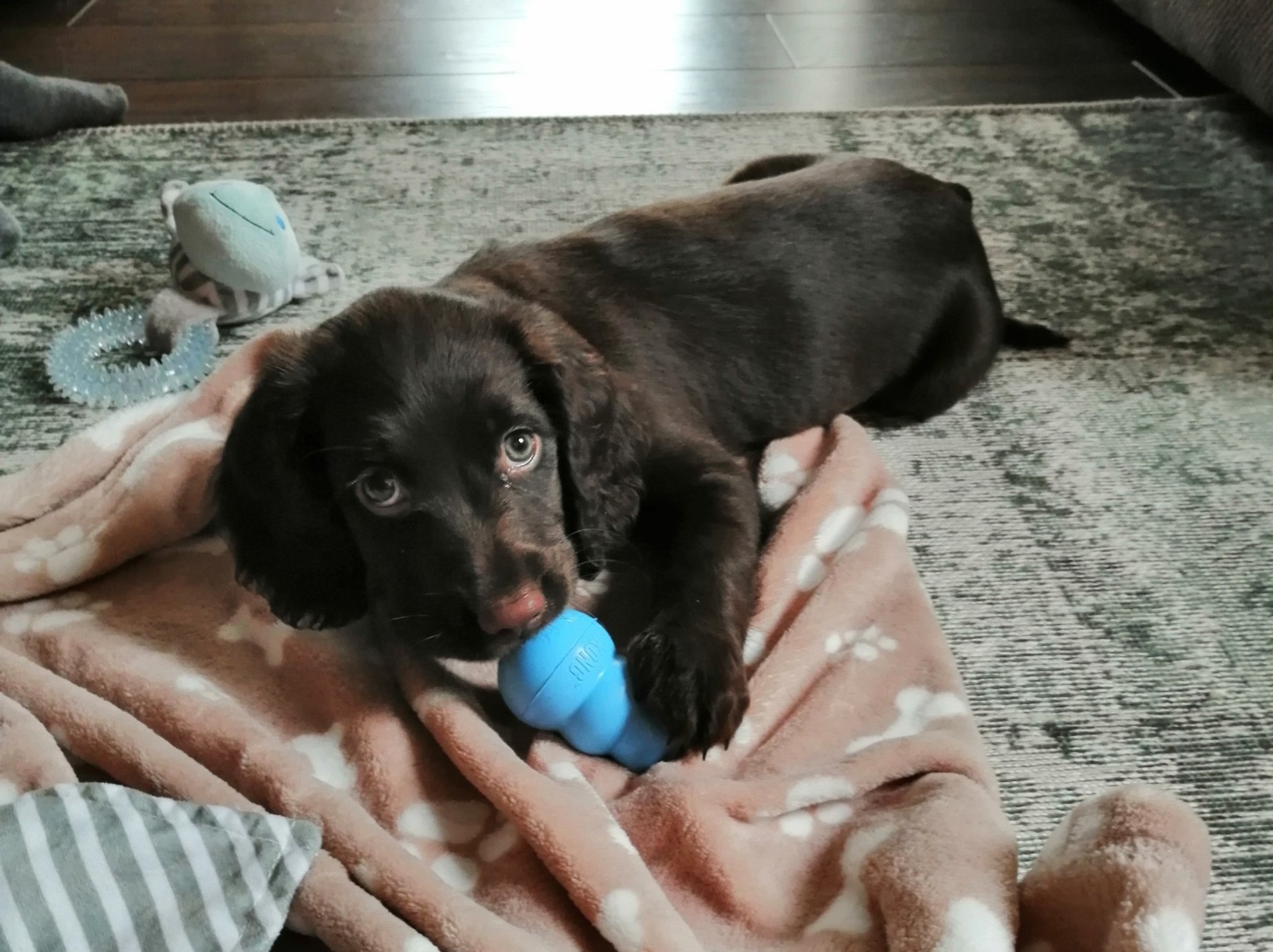
Puppy biting is a normal and natural behaviour, but it's important that we teach our Puppies it's not okay to be biting us. We need to give our Puppies appropriate guidance, using kind and gentle techniques because they won't just grow out of it.
Puppies bite more when they are over-tired, when they need the toilet and when they get over-excited or over-stimulated.
It’s also worth noting that our Puppies will be teething; during the time from 8 weeks to around 8 months Puppies will be losing all of their baby teeth and gaining their adult teeth – so they’re going to need to chew on things to help soothe the pain.
When Puppies are biting, one of the most important things that’s going on is that they’re getting feedback on how firmly they can make contact before it becomes an issue, if you’ve ever seen Littermates playing with each other this is what they’re doing all of the time, they bite one another and receive great feedback on whether or not that was okay, too much, or caused pain, because Puppy teeth are really sharp and pointy they cause more pain with less pressure and our Puppies learn what is and isn’t appropriate. When it comes to our Puppies biting us, we want to continue that process in a way that’s fair and constructive.
Ouch!
One of the big debates is whether or not we say ouch, this really depends on the Puppy, some Puppies will acknowledge your ouch, some may stop because they are fearful, but some Puppies get even more excited and think yay a Human squeaky toy and bite again!
Regardless of whether you have a Puppy who responds to ouch, or one that doesn’t, this advice will work for you!
There are things we can do to help manage our Puppies biting:
Sleep
Our Puppies need plenty of sleep: 8-12 week old Puppies need 18-22 hours of sleep a day, from 12 weeks Puppies still need 16-19 hours of sleep.
Sleep is a really important, especially when it comes to Puppy biting; our sleep cycles last about 4 hours and in that time we get a lot of deep REM sleep, but Dog’s sleep cycles are around 20 minutes, which means they need a lot more sleep to be able to function properly.
If our Puppies don’t get enough sleep then they’re going to be more irritable, more impulsive and a lot more bitey, so we really need to make sure that our Puppies are getting enough good quality sleep, make sure they have a nice, quiet location to sleep, away from all the noise, and that they’re comfortable doing that.
Diet
Diet plays a huge role in behaviour so we need to make sure that the food we are feeding our Puppies is appropriate.
Diet is a huge topic but essentially we need to be sure we’re not feeding our Puppies anything full of sugars or fillers that give them a huge energy boost, because that energy has to go somewhere!
There is a really good impartial website that you can compare the nutritional values of Dog foods on called All About Dog Food, I definitely recommend giving the food you feed your Puppy a search!
Toilet Training
Our Puppies need plenty of opportunities to go to the toilet: keep to a regular toilet training schedule that suits your Puppy.
If your Puppy suddenly gets bitey out of the blue, take them to their toilet area to see if they need to go, if this is the case you may need to take them to the toilet more regularly.
Chewing
We will need lots of safe chew toys to give our Puppies appropriate outlets for their chewing, help to relieve their teething pain, and to help them relax.
We need to provide a selection of different things for our Puppies to chew, lots of different textures, some that are quite hard, others that are quite soft. There are lots of things we can give our Puppies to help, just be careful to ensure that they are suitable and always supervise your Puppy with them for safety.
Examples of chews that are available include:
- Beef tendons
- Beef trachea
- Braided lamb
- Buffalo horns
- Bully sticks
- Cow ears
- Carrots (raw/ frozen)
- Fish skin jerky
- Frozen celery
- Pigs ears
- Pizzles
- Root chews
- Sweet potato chews
- Whimzees
- Yakers bars/ Yak milk chews
Enrichment
Enrichment is really important: we need to make sure that we’re giving our Puppies enrichment throughout the day, to provide them with physical and mental stimulation, which will help them to sleep more, and they’ll get a better quality sleep which will really help to reduce biting!
Check out my other blogs for lots of ideas for enrichment!
Engagement
We need to make sure that we’re engaging with our Puppies enough during the day.
Puppies who get bored will find their own entertainment and will look for ways to get our attention and gain interaction from us one of the things they will very quickly learn is that if we have ignored their efforts to get attention because we’re busy doing something else, then if they pull at your clothes or nip you then you will quickly respond so we need to make sure that we’re giving our Puppies the attention they need and we’re the ones who initiate social interactions!
Problem Prevention
Other things we can do to help prevent problems, include tucking in loose ends of clothing, because loose, moving clothing is really fun for our Puppies to chase and grab!
- Tuck in your shoelaces, stuff the bottom of your trousers into your socks, or tuck your dressing gown cord into a pocket – and have plenty of toys to hand to offer your Puppy instead!
- Always supervise children and Puppies to ensure there is no mouthing or biting.
- Avoid handling, or picking up your Puppy when they’re too excited because they will be more grabby and bitey when they’re in an over-excited mood!
What to Do When Your Puppy Bites
The following steps will help you when your Puppy bites, because even with all of these great tips it’s going to happen at some point!
The first thing we need to do is teach our Puppies how to be gentle with their mouths; we need to teach them not to bite hard, or to cause any pain so that they learn bite inhibition
1) To start with, if your Puppy is mouthing gently then that’s okay, we will build up to stopping this completely, but at first we can teach them that gentle contact is lovely, this is really important for Puppies to learn how to be gentle around Human skin, but we’re not going to allow this mouthing on children at all, no matter how gently!
2) The moment your Puppy goes from gentle mouthing to firmer contact, calmly swap them onto something else to chew – keep some toys to hand everywhere so that you always have something within reach, as soon as your Puppy causes any pain you can give them a much better alternative!
3) If your Puppy bites and starts to cause pain, swap them onto something appropriate, except when children are involved - the second your Puppy even touches them with their teeth the toy needs to be provided no matter how gently your Puppy is biting.
4) If you offer your Puppy a toy and they’re not interested and go back to biting you, then calmly and quietly move away. Eventually your Puppy will learn causing pain removes the interaction with you: if you’re in your Puppy’s pen then leave for 10/20 seconds, if your Puppy isn’t in a pen and you have a stair-gate then stand the other side of that.
5) When you go back to your Puppy, offer them something appropriate to chew again, your Puppy will learn that if they continue to bite you then the consequence is that they lose your attention for a short period of time, but if your Puppy chews their toy instead you will continue spending time together.
6) Over time, your Puppy will start to learn that with gentle contact our interaction continues, but if they make firm or hard contact then it stops – this will teach them bite inhibition because they will learn how to be gentle with their teeth.
7) When your Puppy has learned to just make gentle contact with their teeth, we can start swapping your Puppy onto a toy any time they make contact with their teeth, no matter how gently, because the end goal is that our Puppies learn how to be gentle with their mouths, but don’t continue to do any mouthing.
Troubleshooting
If your Puppy isn’t taking the toy but continues to grab onto you, then we need to stop and have a look at what else is going on, we know that Puppies will bite a lot more when they’re frustrated, over tired or over excited and if your Puppy is in that frame of mind then they’re not going to be able to learn and you’ll get stuck in a cycle where everyone just gets more and more frustrated and it gets really stressful! We want to avoid that, so if you’ve been leaving the room and then offering a toy and it’s really not helping then you’ll need to find your Puppy something else to do that will help calm them down give your Puppy something to sniff, lick, or chew because these are all really calming activities.
You could give your Puppy a snuffle mat, lickimat, or a stuffed Kong in their pen because any of these will help to calm your Puppy down and they’ll most likely have a good sleep! When your Puppy wakes up from a good sleep you’ll see much less of this bitey and impulsive behaviour and they’ll be ready to learn! It’s really important that you don’t worry that this is rewarding your Puppy for biting you, what we’re doing is managing the behaviour so that it doesn’t continue and we’re changing their mind-set in that moment when Puppies are that frustrated they’re not in a position to learn, so we need to do something to help them out and calm them down, this will help to keep a good relationship with our Puppies and when they wake up they’ll be back in a position to think more clearly and then they will be able to learn.
Click here to download a free copy of my Puppy Biting Ebook from the freebies page of my website
Click here to watch my video on Puppy biting on YouTube
For more help with training your Puppy click here to visit my online school
